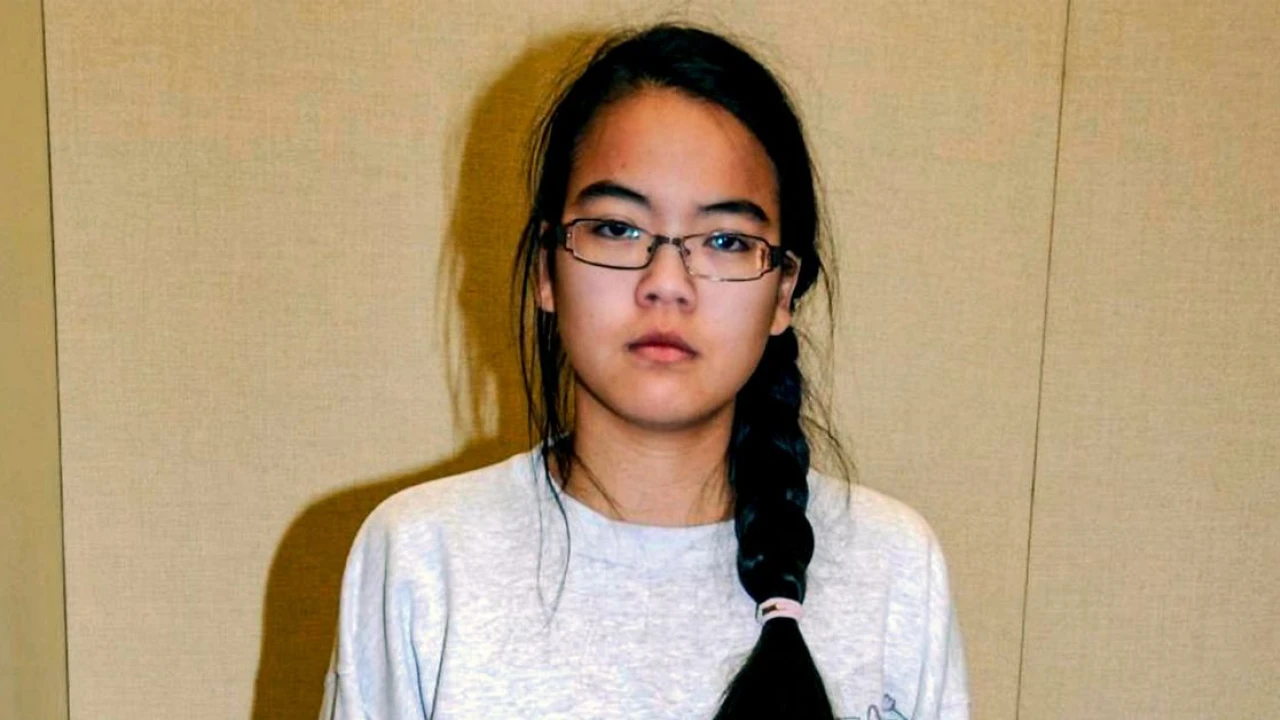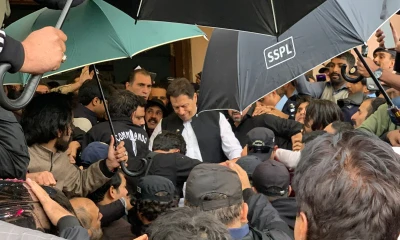
What’s the point of philosophy?
It’s an old question, maybe one of the oldest in the history of philosophy, and there has never been a consensus answer. Some people think the point of philosophy is to make the world make sense, to show how everything hangs together. For others, philosophy is a practical tool that ought to tell us how to live.
If you’re in the latter camp, then it’s fair to say that you think of philosophy as a form of self-help. It’s a tradition of thought that — in theory, at least — can guide you to a better life, or something like that. And I don’t think that’s too much to ask of philosophy. What good is all that ruminating if it can’t offer you something useful when you’re anxious or depressed or mired in one of those dreaded midlife crises?
Kieran Setiya is a philosopher at MIT and the author of several books, most recently Life Is Hard: How Philosophy Can Help Us Find Our Way and Midlife: A Philosophical Guide. Setiya’s work is uncommonly accessible and a great example of philosophy that really tries to wrestle with the concrete problems of everyday life.
I recently invited Setiya on The Gray Area to talk about the perils of middle age and how philosophy has helped pull us out of the dark. Below is an excerpt of our conversation, edited for length and clarity. As always, there’s much more in the full podcast, so listen to and follow The Gray Area on Apple Podcasts, Spotify, Stitcher, or wherever you find podcasts. New episodes drop every Monday.
Sean Illing
You wrote a book called Life Is Hard. Not that your philosophy of life can be summed up in three words, but if you had to sum it up in three words, is that it?
Kieran Setiya
I think it is. Ancient philosophers like Plato and Aristotle thought about the ideal life and they tried to provide a blueprint for — and a map toward — it. And that can be both unrealistic and in a certain way self-punitive. Often the right way to approach the ideal life is to think, “That’s not available. I shouldn’t beat myself up about the fact that that’s not available.” Really living well, or living as well as you can, is about dealing with the ways in which life is hard.
Sean Illing
How do you define a midlife crisis?
Kieran Setiya
The midlife crisis is one of those funny cultural phenomena that has a particular date of origin. In 1965, this Canadian psychoanalyst Elliott Jaques writes a paper, “Death and the Midlife Crisis,” and that’s the origin of the phrase. Jacques was looking at patients and the lives of artists who experienced midlife creative crises. These were mostly people in their 30s and it doesn’t really fit the stereotype of the midlife crisis today.
There’s been a shift in the way people think about the midlife crisis. The idea now is that people’s life satisfaction takes the form of a gentle U-shape, that basically, even if it’s not a crisis, people tend to be at their lowest ebb in their 40s. This is true for men and women, and it’s true around the world to differing degrees, but it’s pretty pervasive.
So when people like me talk about the midlife crisis, what they really have in mind is more like a midlife malaise. It may not reach the crisis level, but there seems to be something distinctively challenging about finding meaning and orientation in this midlife period.
Sean Illing
What is it about this period that generates all this anxiety?
Kieran Setiya
There are many midlife crises; it’s not just one thing. I think some of them are looking to the past. There’s regret. There’s the sense that your options have narrowed. Whatever possibilities might’ve seemed open to you earlier, whatever choices you’ve made, you’re at a point where there are many kinds of lives that might have been really attractive to you, and now it’s clear in a vivid, material way that you can’t live them.
There’s also regret that things have gone wrong in your life, you’ve made mistakes, bad things have happened, and now the project is, “How do I live the rest of my life in this imperfect circumstance?” The dream life is off the table for most of us.
People also have a sense that most of life is occupied by this daily grind. Rather than things that make life seem positively valuable, it’s just one thing after another. And then death starts to look like it’s at a distance that you can measure in terms you really palpably understand. You have a sense of what a decade is like, and there’s only three or four left at best.
Sean Illing
I’m 42 and I can feel all of that. When you’re young, the future is pure potential. Ahead is nothing but freedom and choices. But as you get older, life shrinks, responsibilities pile up, and you get trapped in the consequences of the decisions you’ve made. That’s a hard thing to wrestle with.
Kieran Setiya
I think that’s exactly right. Part of what’s philosophically puzzling about this is that it’s not news. Whatever your sense of options was when you were 20, you knew you weren’t going to get to do all of those things. What this suggests is that there’s a profound difference between knowing that things might go a certain way, well or badly, and knowing in concrete detail how they went well or badly.
Part of the sense of missing out has to do with what philosophers call “incommensurable values.” The idea that if you’re choosing between $50 and $100, you take the $100 and you don’t have a moment’s regret. But if you’re choosing between going to a concert or staying home and spending time with your kid, either way you’re going to miss out on something that is irreplaceable. One of the things we experience in midlife is all the kinds of lives we don’t get to live that are different from our life, and there’s no real compensation for that, and that can be very painful.
On the other hand, I think it’s useful to see the flip side. The only way you could avoid that kind of missing out is if the world was suddenly totally impoverished of variety. Or you were so monomaniacal, you just didn’t care about anything but money, for instance. And you don’t really want that.
There’s a way in which the sense that there’s so much in the world we’ll never be able to experience is a manifestation of something we really shouldn’t regret, and in fact should cherish, namely the evaluative richness of the world, the diversity of good things. And there’s a consolation in that.
Sean Illing
One of the arguments you make is how easily we can delude ourselves when we start pining for the roads not traveled. “What if I really went for it? What if I tried to become a novelist, or a musician, or what if I joined that commune?” Or whatever life fantasy you had when you were younger.
But if you take that seriously and consider what it really means, you might not like it, because the things you might value the most in your life now, like your children, they don’t exist if you had zigged instead of zagging 15 or 20 years ago. That’s what it means to have lived that alternative life.
Kieran Setiya
Philosophy can lead us toward this kind of unhelpful abstraction, but it can also tell us what’s going wrong with it. The thought, “I could have had a better life, things could have gone better for me”: It’s almost always tempting and true, but when you think through what it would mean in concrete terms — what would have happened if your failed marriage had not happened?
Often the answer is that you would never have had your kid, or wouldn’t have met these people. And you might think, “Yeah, but I would have had some other unspecifiable friends who would have been great, and some other unspecifiable kid who would have been great.” But I think we rightly don’t evaluate our lives just in terms of those kinds of abstract possibilities, but in terms of attachments to particulars.
So if you just ask yourself, “Could my life have been better?” you’re throwing away one of the basic sources of consolation, a rational consolation, which is attachment to the particularity of the good things in your own life, even if you acknowledge that they’re not perfect and that there are other things that could have been better.
Sean Illing
I will say, though, that when real pain strikes, it’s not always easy to find relief in abstract arguments. Two of the hardest moments of my adult life were the sudden loss of my mother a few years ago and the unexpected loss of a baby last year.
Like a lot of people, I did that thing where I felt victimized, like the world’s conspiring against me. But then you go through the anger of all that and realize that you’re not uniquely unlucky, that this happens to people every day. Pain and loss are part of life, as central to life as anything else, and good philosophy, whether it’s in academic books or novels or films, can help remind us of that, and I guess it helped me in that way.
Kieran Setiya
I’m sorry to hear about both of those losses. I think what philosophy has to do is what human beings have to do when faced with those kinds of difficulties, which is not switch too rapidly into what I call assurance advice mode, which is saying, “It’s all going to be fine. Or here’s what you do.” Those are things we do in personal interaction, but they’re also versions of philosophical approaches to the difficulties of life.
There’s the kind of theodicy where philosophers argue that all is for the best. They’ve got some proof that although this seems bad, it’s going to work out well. Or they have some theory where they say, “My philosophical principle is this, I’ll just apply it to your situation.” And those are rarely good philosophical tactics for dealing with the kind of difficulties you’re describing, for reasons that are not unrelated to the fact that they’re rarely good interpersonal ways of approaching difficulty.
The starting point is sitting with difficulty, acknowledging it, trying to take in what’s really happening, really describing the particularity of it. It’s connected with a kind of philosophical methodology that I have come to embrace. And it’s a shift from thinking, “Well, philosophy is going to be about coming up with really cool arguments to prove you should think this or that,” to thinking, “There’s a real continuity between the literary and human description of phenomena like grief and philosophical reflection.”
Because often what philosophical reflection provides is less a proof that you should live this way and more concepts with which to articulate your experience and then structure and guide how you relate to reality. And seen that way, we can understand how philosophy can operate as self-help.
To hear the rest of the conversation, click here, and be sure to follow The Gray Area on Apple Podcasts, Spotify, Pandora, or wherever you listen to podcasts.
Regional
Why the case at the center of Netflix’s What Jennifer Did isn’t over yet
Jennifer Pan allegedly hired hitmen to kill her parents in 2010. But the case is in limbo.

The end of Netflix’s new true crime documentary What Jennifer Did reveals a bombshell detail: After we’ve learned of the alleged culprits and the alleged motive for the horrific 2010 murder of Toronto mom Bich Pan and the attempted murder of her husband, Huei Hann Pan, we learn that the perpetrators have all had their convictions overturned. They are currently awaiting retrials.
The documentary chronicles the unraveling secrets of the Pans’ daughter, Jennifer, in the aftermath of a shocking home invasion and shooting that left Bich dead and her husband blind in one eye. Over the course of the film, audiences unfamiliar with this infamous crime learn of the elaborate, enormous web of lies that Jennifer Pan wove for her parents for years — lies that began in high school and included everything from doctoring report cards to faking her high school graduation and subsequent college attendance to nonexistent internships and lies about her relationship status — all to keep up the facade of a golden child.
Through taped interrogation interviews with Jennifer and more recent interviews with authorities who worked the case, we come to understand that the more her parents saw through Jennifer’s deceit and tried to rein in her behavior, the more pressure she felt to break free of their control. At age 24, while living at home under a set of strict rules as a result of all her lies, Jennifer Pan tried repeatedly to hire someone to kill her father. On November 8, 2010, she allegedly succeeded, leaving the door unlocked for three assailants, friends of her ex-boyfriend Daniel Wong, to enter the house and attack her parents.
During the investigation, Jennifer’s lies rapidly collapsed, and she was convicted at trial of first-degree murder and attempted murder and sentenced to life in prison alongside three of her co-conspirators. A fourth pleaded guilty to conspiracy and received an 18-year sentence, but died in prison in 2018.
These convictions, the documentary informs us, have all since been tossed out — and the film ends without explaining why or elaborating on the status of the case, beyond noting that retrials are planned.
So what happened, and what’s next?
Improper jury instructions led to new trials for Jennifer and her co-conspirators
The overturned convictions come as a result of appeals filed by Jennifer Pan and her three remaining co-conspirators: her ex Daniel Wong and his friends Lenford Crawford and David Mylvaganam, who were both involved in the home invasion and shooting. The appeals had seven points of argument, including the argument that in the original 2014 trial, the presiding judge Justice R. Cary Boswell improperly instructed the jury. This tactic can be a strong form of appeal for defense attorneys because how a judge instructs a jury can influence how they view evidence and testimony and lead them to disregard certain verdicts.
Attorneys for the Pan defendants argued that, in this case, both things happened: that Justice Boswell influenced the jury to consider only two “paths to liability” for the accused. This doesn’t mean he instructed them to consider only two verdicts, but rather that when he was advising them how to think about the facts of the case, he suggested they consider either one of two possible scenarios for how the home invasion and murder occurred: that the assailants planned to murder both of Jennifer’s parents, or that they planned to “commit a home invasion/robbery” and the murders occurred in the process.
The appeal argued that these instructions significantly limited the conclusions the jurors could have drawn from the evidence presented at trial. For instance, Jennifer herself had argued as part of her defense that she had tried to hire the hitmen to kill her, not her parents — a third scenario Justice Boswell did not mention.
In May 2023, a Canadian appellate panel agreed with the defense. “In my view, this is the most difficult and most consequential error that is put forward,” Justice Ian Nordheimer wrote in the panel’s decision. “If it succeeds, it requires a new trial for all the appellants on the murder charge. I have concluded that it does.” The court rejected the defendants’ appeals for their convictions for the attempted murder of Hann Pan, so they have remained in jail, still serving that sentence, while awaiting their retrials.
This is, however, complicated in the Canadian court system; unlike the US, in Canada, prosecutors also have the right of appeal at this stage, so in August 2023, prosecutors for the Pan case filed their own appeal against the appellate ruling with the Canadian Supreme Court. That means we’ve entered a double limbo: We’re waiting on the Supreme Court of Canada to decide whether to hear arguments on the appeal. If they don’t, or if they do but ultimately side with the defense, then the retrial order remains, which means that then we’ll be waiting on the lower courts to decide whether to bring the case to a retrial.
In the latter event, a retrial seems very likely, given what a high-profile case this is — a 2015 story by reporter Karen Ho about the case went massively viral and brought the Pan case to broader attention, after which came reporter Jeremy Grimaldi’s 2016 book on the case, which formed the basis of the documentary. There’s also still plenty of evidence against the perpetrators, in the form of texts, phone records, and their various testimonies against each other. These all add up to, well, What Jennifer Did — and what Jennifer did is already the stuff of true crime legend, whether the courts ultimately rule in her favor or not.
Regional
The charitable deduction is a complex, broken mess. There’s a better way.
Right now, charitable donations could be more effective. Companies sometimes match donations to charity. What if the government did too?

Imagine a charity comes to you with an offer. If you give them a donation now, they’ll get it at least partially matched — so for every dollar you give, a wealthy benefactor will add 25 cents. Your giving has a higher bang for the buck than normal.
Now imagine the charity instead tells you that your gift might help your taxes ... but it probably won’t. In fact, there’s a 90 percent chance it will do nothing to reduce your tax burden. But there’s a small chance it will help. How much will it help? Hard to say; you might get anywhere from 10 to 37 percent of the donation back on your taxes next year, depending on a ton of other factors that have nothing to do with charity.
Which of these options sounds better to you? And more importantly: Which of them is more likely to spur you to donate?
The second option is how the United States charitable deduction currently works. It’s only available to people who “itemize” their deductions, meaning they eschew the standard deduction for specialized benefits based on mortgage payments, state taxes, and other factors. But barely 9 percent of filers even did that in 2021, and they are disproportionately wealthy ones.
How much the charitable deduction reduces your taxes, and thus benefits you, depends on your tax bracket, which means it could be worth as little as 10 percent of your gift or as much as 37 percent. It’s a complex, difficult-to-understand program, which surely limits how effective it can be at its main goal: encouraging Americans to give to charity.
The first option, the 25 cents on the dollar match? That’s what the United Kingdom does. When you donate to a charity there, you can check a box confirming you’re a UK taxpayer. The charity then gets a 25 percent match from the government on all donations from taxpayers.
The program is called Gift Aid, and it has helped the UK preserve its system of pay-as-you-earn income taxes, in which about two-thirds of Britons don’t have to file tax returns at all. Most things that would be deductions in the US instead exist outside the tax system in the UK, in programs like Gift Aid. It seems to work at making giving more popular: A recent global survey found that 71 percent of Britons donated to charity, compared to 61 percent of Americans, and a sharp contrast from the very low rates of giving in much of mainland Europe (37 percent in France, 42 percent in Italy).
It’s a simpler way to incentivize charity, and as Tax Policy Center economist Robert McClelland explains in a new report, it’s a more effective way too.
Many studies suggest matches are more effective than deductions
In recent decades, economists and psychologists have taken to conducting studies trying to uncover biases in the way people respond to economic situations, a research program known as “behavioral economics.” For instance, people tend to be more sad about losing something they have than happy when gaining something of equivalent value (“loss aversion”); they tend to put undue weight on the first thing they hear about a certain subject (“anchoring bias”).
Partly due to this research program, a number of economists have conducted experiments to see whether matching grants or a “rebate” like the charitable deduction work better. McClelland reviews many of these experiments and finds that they overwhelmingly show matches are more effective.
The team of Catherine Eckel and Philip Grossman conducted many of these trials. A paper of theirs in 2003 found that a match was about three times as effective as a rebate; a 2017 paper includes three experiments, all of which find matches are more effective if your goal is maximizing the ultimate resources of the charity.
Gift Aid means a simpler, fairer tax system
The UK model has other advantages too. Gift Aid functions as a universal, refundable charitable credit of 20 percent, available to all of its residents regardless of their tax bracket or situation. It is not solely available to a minority of taxpayers who claim a special set of itemized deductions. It is available to all Britons regardless of income. That means a wider share of donors get their philanthropic preferences reflected.
The administration is also simpler than a credit because donors need not remember their donations when filing taxes. Administration for charities is also relatively simple, requiring only a report of eligible donations to His Majesty’s Revenue & Customs. This is equivalent to the Form 990 reports already required of large charitable institutions in the United States. The additional reporting burden would be fairly minimal.
What’s more, this kind of approach would make it easier for the US to eliminate its itemized deductions, a long-held goal of tax reformers. Economists generally believe the home interest deduction is a disaster that makes homes more expensive and encourages excessive debt; the state and local tax deduction is mostly a regressive transfer to wealthy people in high-tax states. Eliminating the charitable deduction in favor of a Gift Aid program would reduce the number of people using these deductions too, by making itemizing less attractive overall.
If, as expected, Congress votes to continue the larger standard deduction passed as part of the Trump tax cuts in 2017 (and which is currently set to expire in 2025), these deductions will continue to be claimed by only a small share of taxpayers. Getting rid of the charitable deduction would make that share smaller still, and help shrink itemized deductions to a size where they might be junked entirely.
A Gift Aid program would also eliminate certain key abuses of the charitable deduction. In recent years, wealthy donors have flocked to “donor-advised funds,” investment vehicles at financial institutions like Fidelity or Charles Schwab that promise their proceeds will eventually be dispersed to charitable institutions. Donors receive immediate charitable deductions for their contributions to these funds, irrespective of when or even if their donations are actually dispersed (there is no time limit within which they have to spend the money). This has provoked attempts at reform meant to speed disbursement, but as of this writing, no reform has passed Congress.
More daringly, some taxpayers have used the charitable deduction to subsidize what amounts to personal consumption. A number of wealthy art collectors have in recent decades claimed large deductions for donations to museums they themselves have created — and which are rarely, if ever, open to the public. The Brant Foundation Art Study Center, located close to the home of its benefactor Peter Brant in Greenwich, Connecticut, provided Brant with tax breaks for all the art he endowed it with, despite only being open to the public by appointment.
Without a charitable deduction, these kinds of abuses would not be possible, and they would not be possible under a Gift Aid regime either. While a billionaire-controlled nonprofit art museum would be eligible for Gift Aid reimbursement, it would be legally required to use that money to further its philanthropic mission. By contrast, money a taxpayer saves due to the charitable deduction could be legally used for any purpose. Donor-advised funds could give to charities that then in turn receive Gift Aid subsidy, but the subsidy would only come when the funds were actually dispersed.
2025 is a time to get creative about taxes
While much of the focus today is on this year’s taxes — get them in by the end of the day — next year is set to be one of the most consequential years in a long while for the federal tax code.
Most of the individual provisions of the 2017 Trump tax cuts — the rate cuts, the larger standard deduction and child credit, limits on the state and local and mortgage interest deductions — are expiring. With Trump wanting to defend his legacy and Biden refusing to raise taxes on people earning under $400,000 a year, both parties desperately want to preserve the bulk of these cuts.
One of my biggest hopes is that they do this in a way that makes the code overall less, not more, complicated and reduces taxpayers’ burden in time and energy. Replacing the charitable deduction with a Gift Aid program would go a long way toward that, pushing the US further away from specialized deductions for this and that and toward a simpler system where everyone at a given income pays the same amount.
-

 Pakistan 2 days ago
Pakistan 2 days agoImran Khan's interim bail extended in three cases
-

 Pakistan 1 day ago
Pakistan 1 day agoPM Shehbaz Sharif meets Saudi Foreign Minister
-

 Pakistan 1 day ago
Pakistan 1 day agoDeliberations underway to change Governor Sindh
-

 Pakistan 2 days ago
Pakistan 2 days agoPunjab CM Maryam seeks comprehensive development plan for Murree
-

 Business 1 day ago
Business 1 day agoGold price jacks up by Rs2400 per tola in Pakistan
-

 Pakistan 2 days ago
Pakistan 2 days agoFinance Minister, SG CVF discuss ways to address climate challenges
-

 Technology 1 day ago
Technology 1 day agoAdobe Premiere Pro is getting generative AI video tools — and hopefully OpenAI’s Sora
-

 Pakistan 1 day ago
Pakistan 1 day agoFaizabad Dharna Inquiry Commission gives clean chit to Faiz Hameed





















